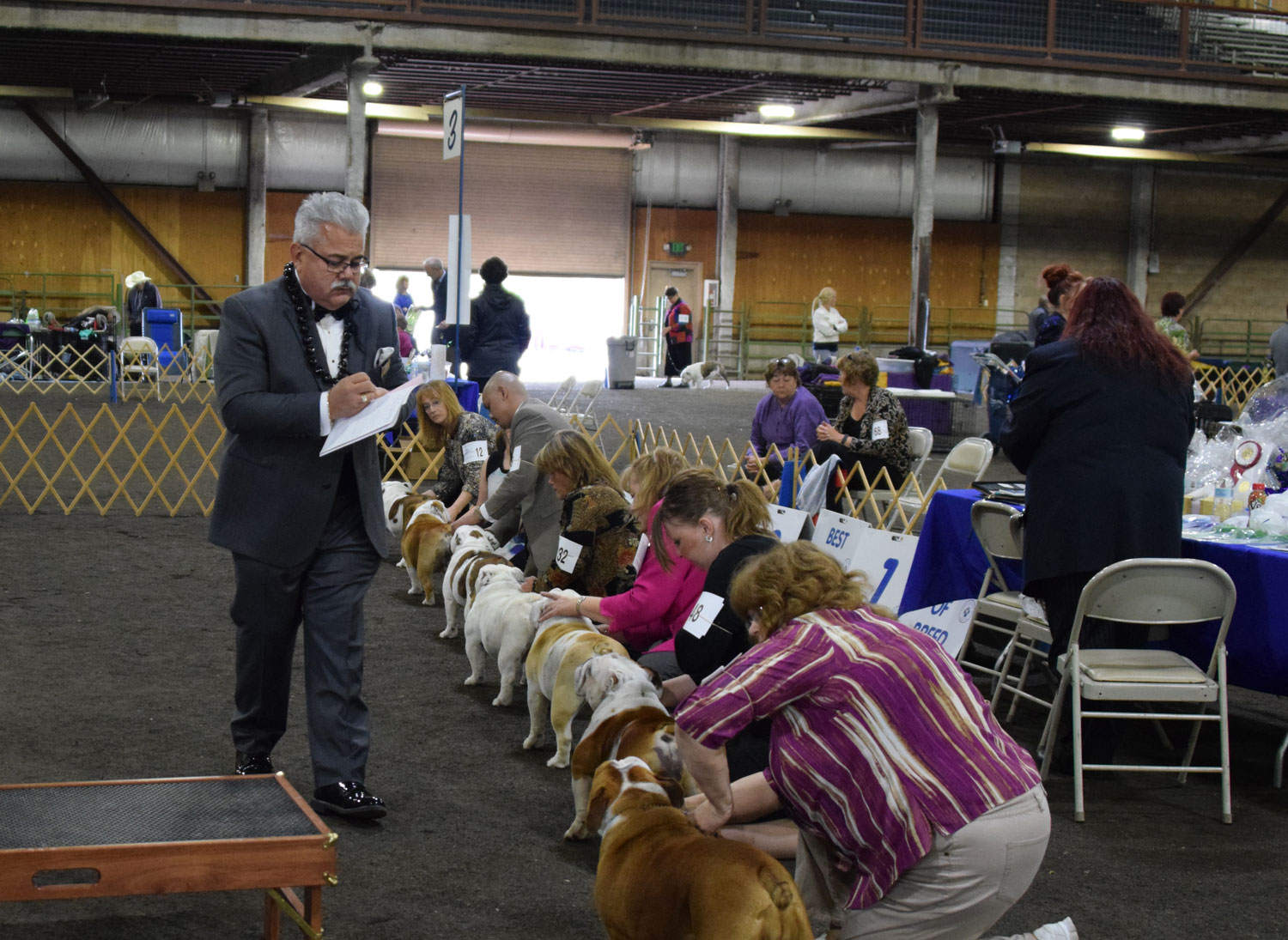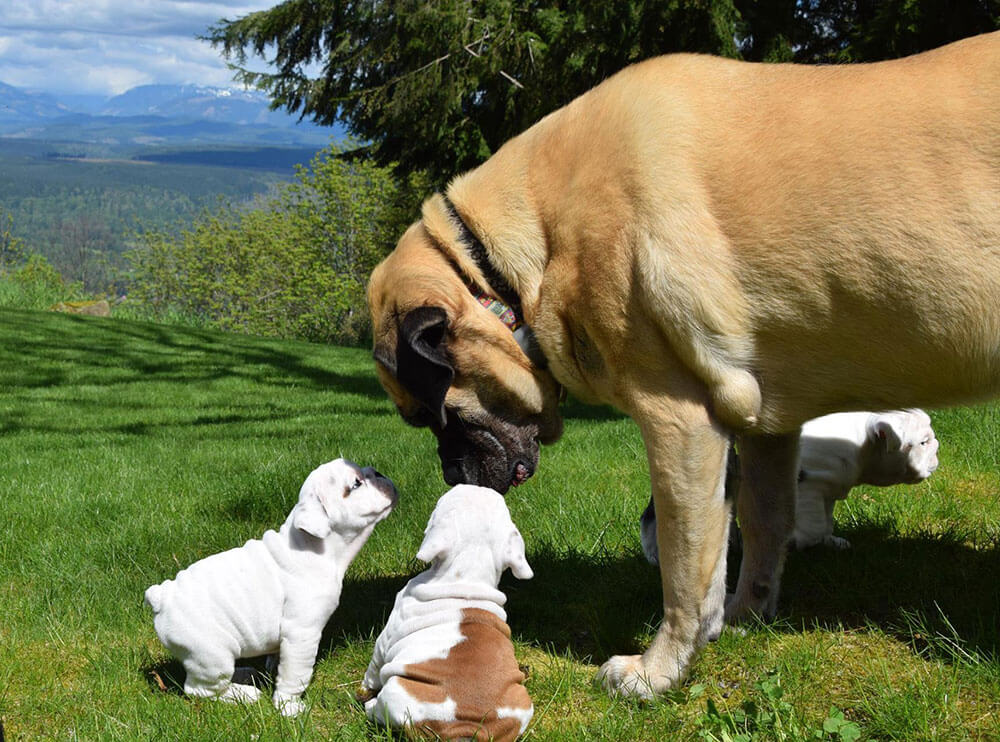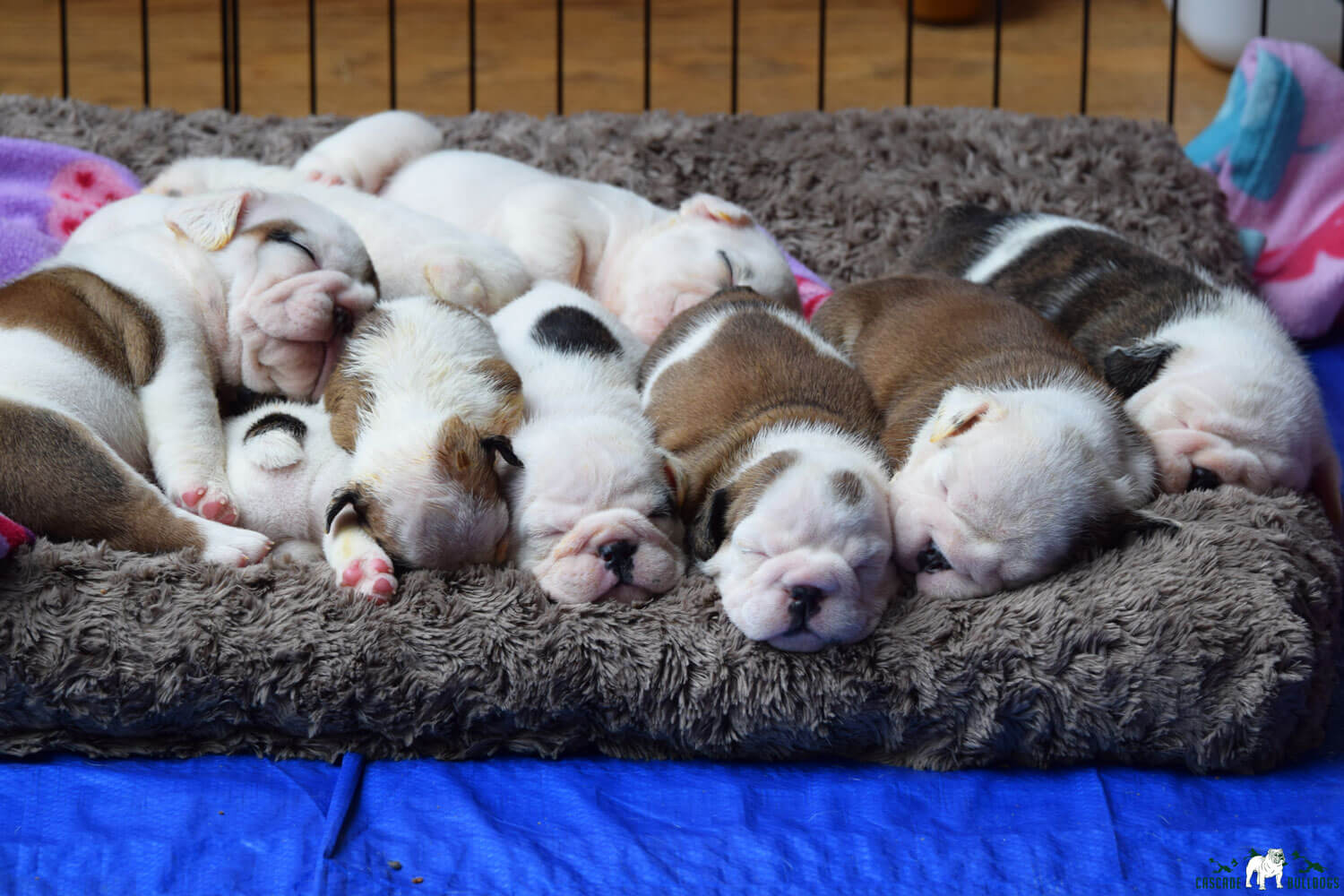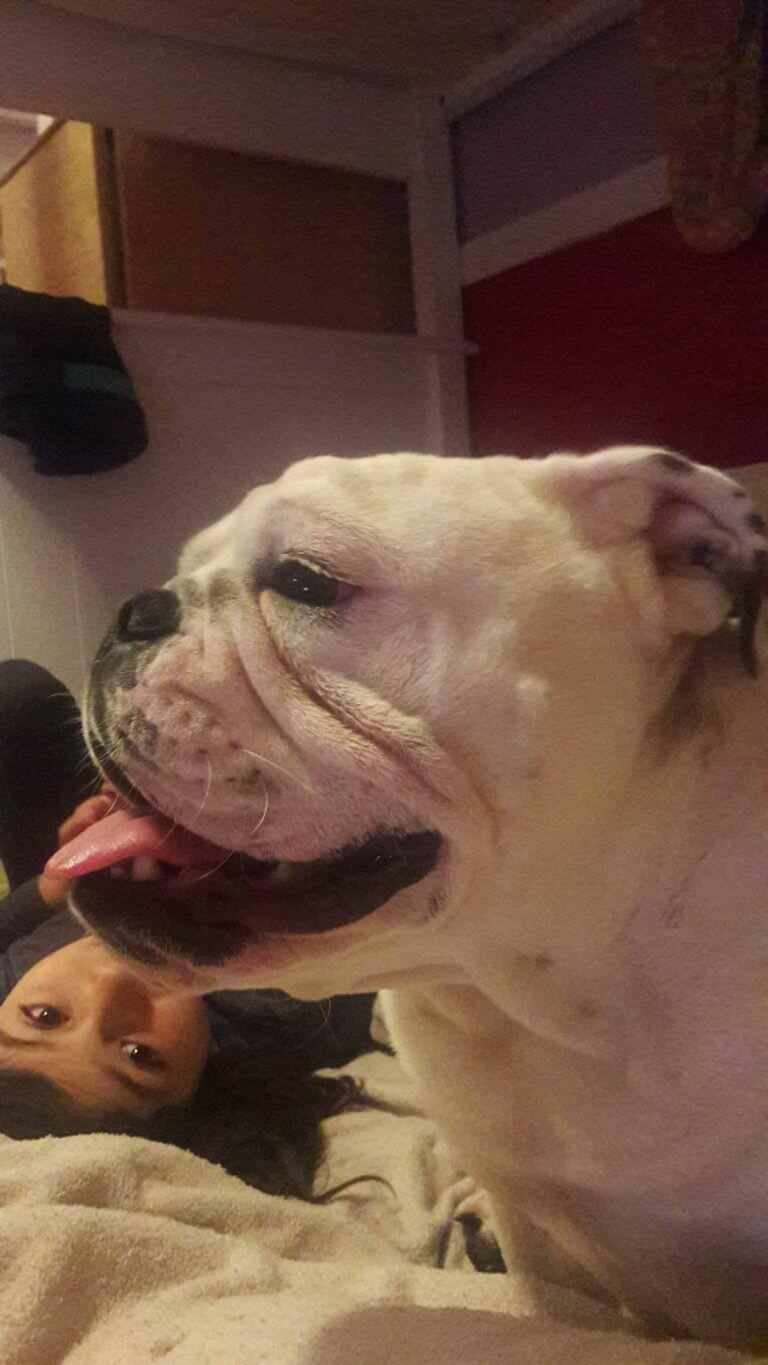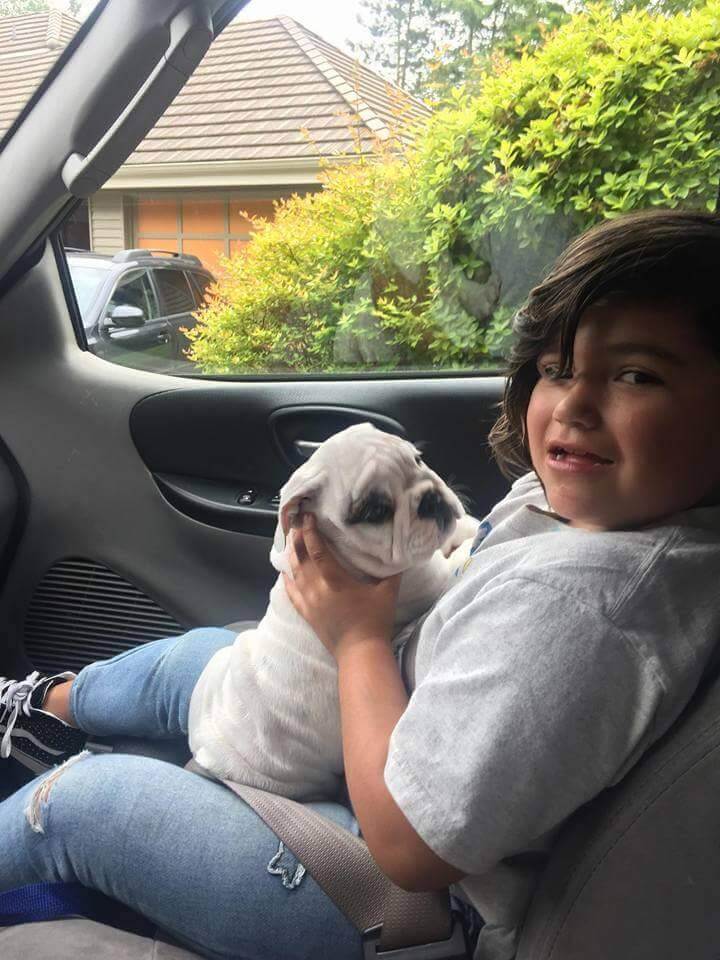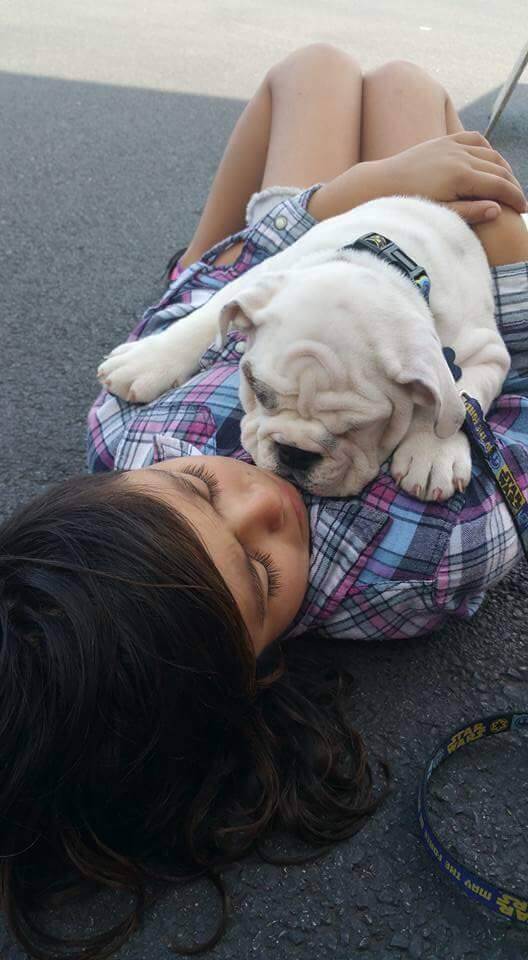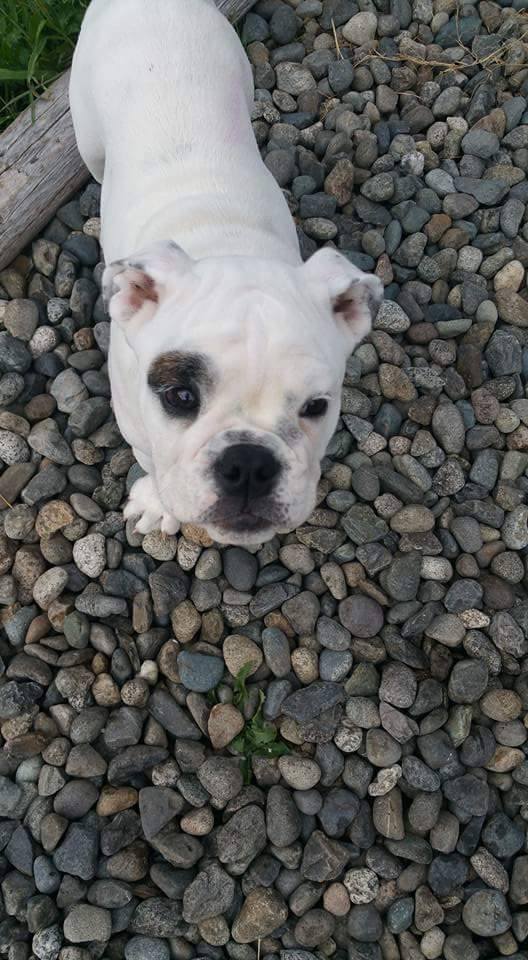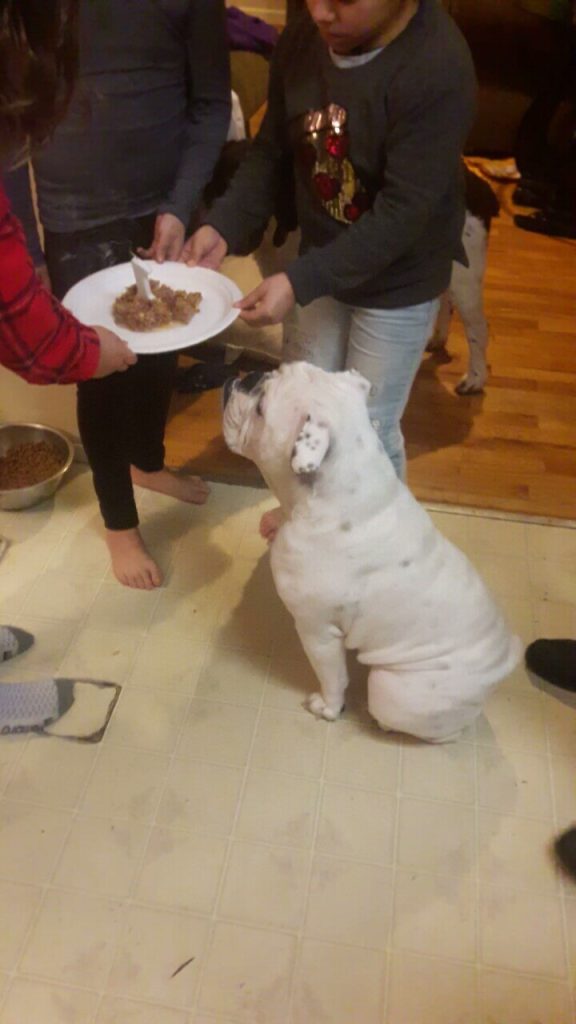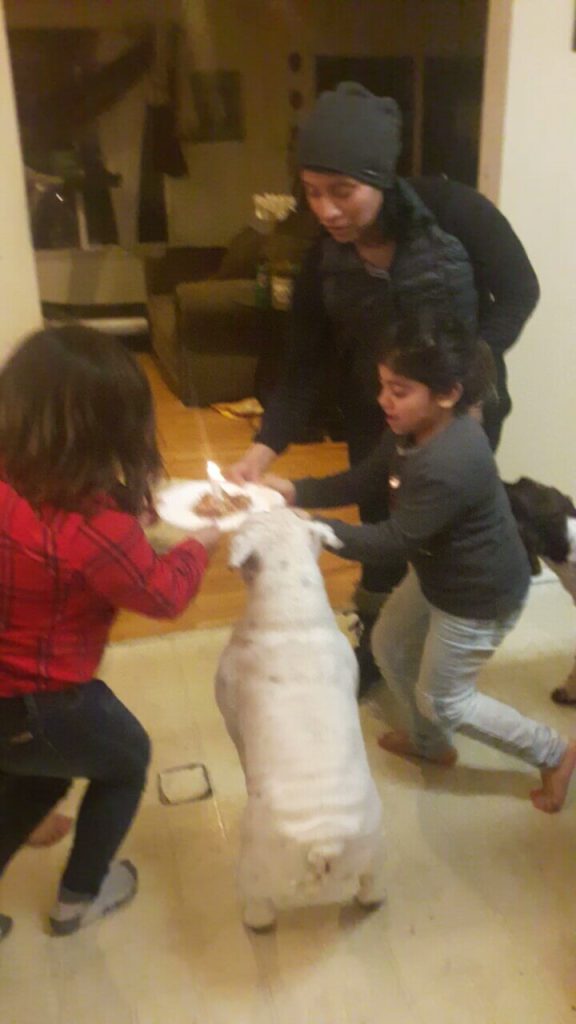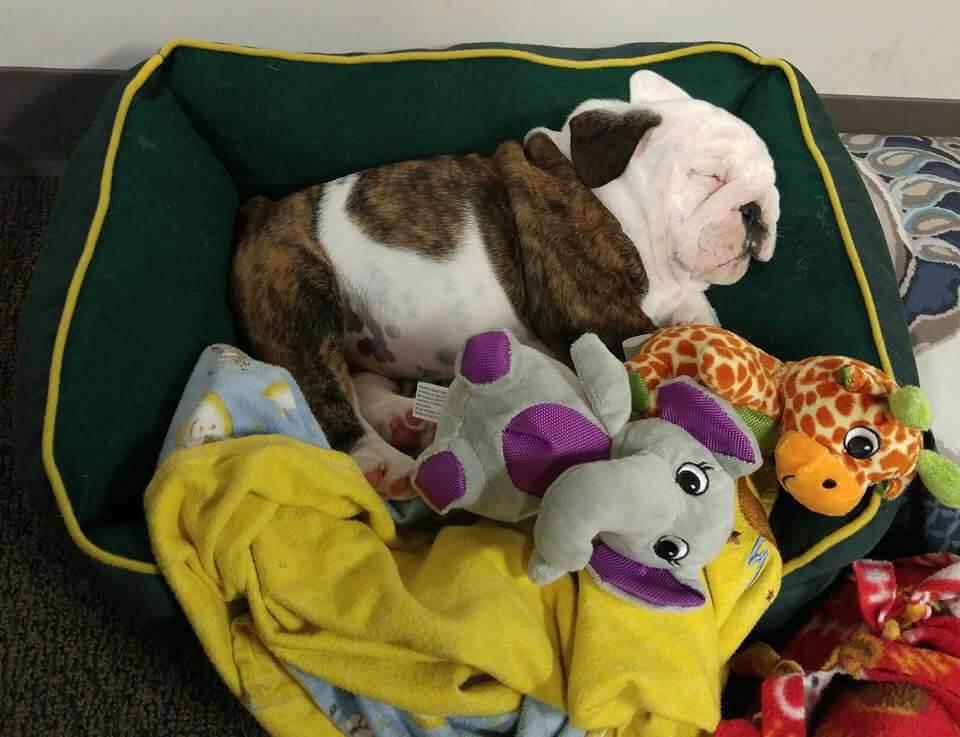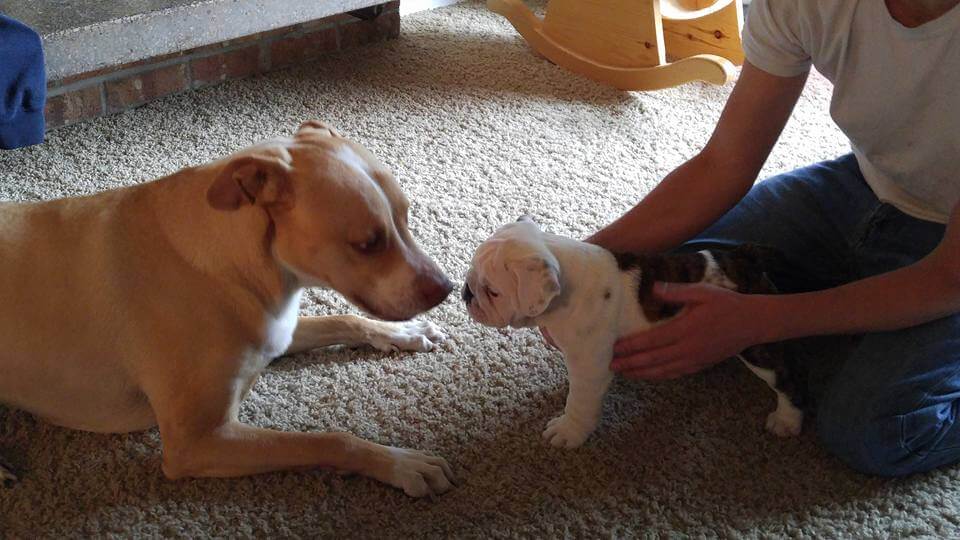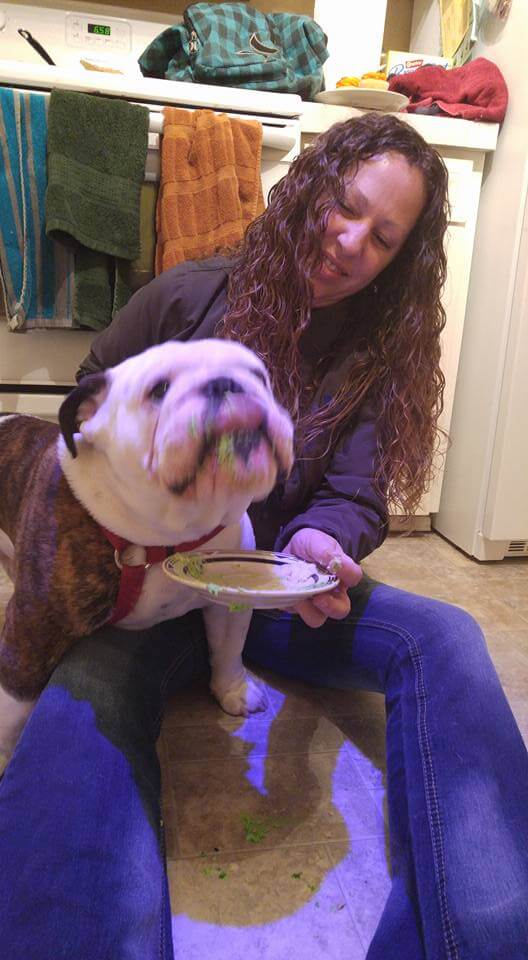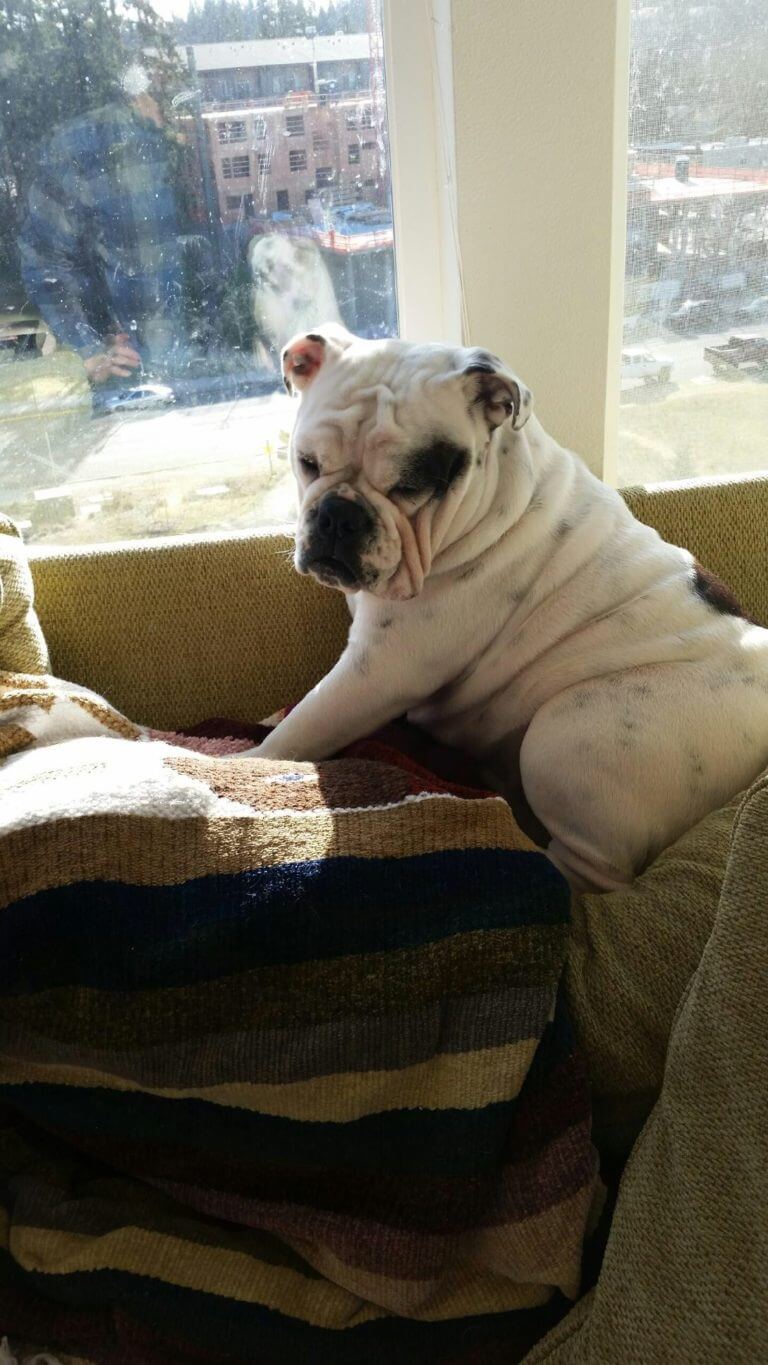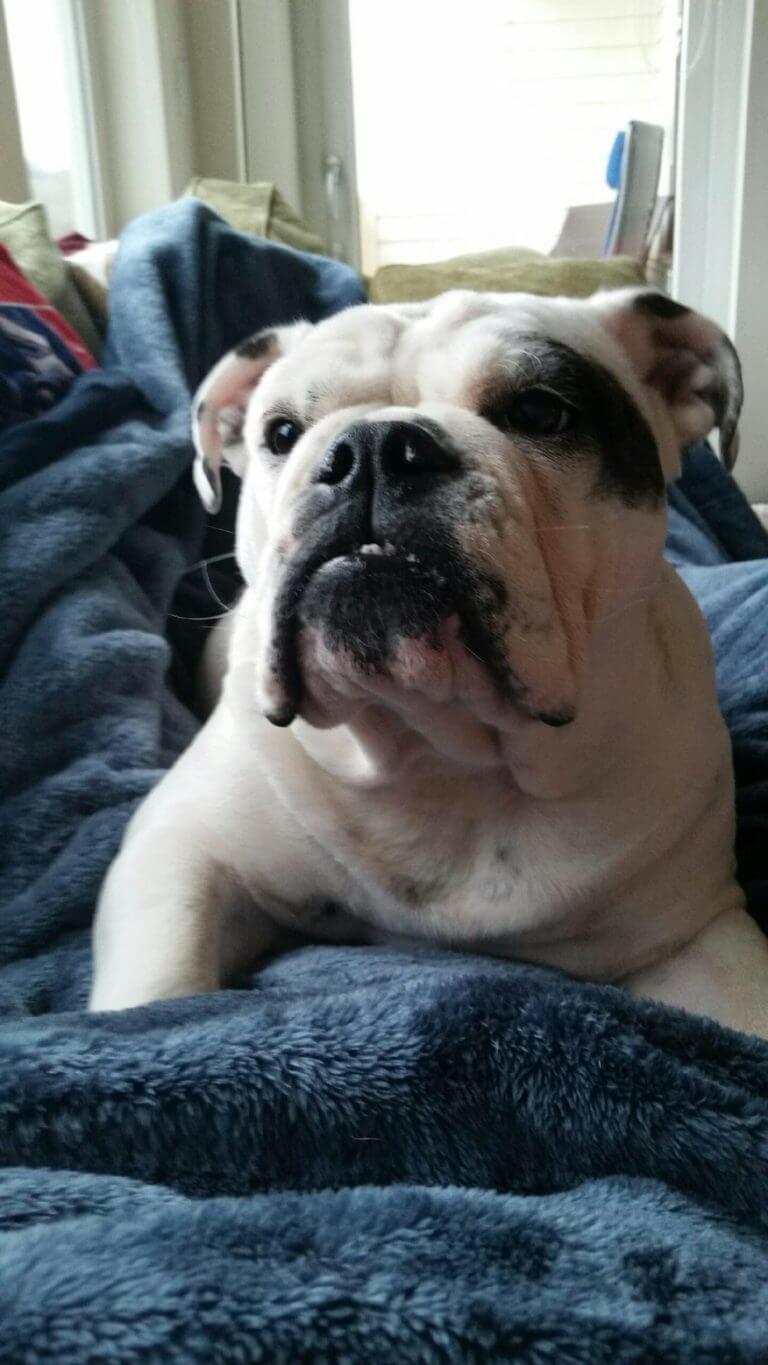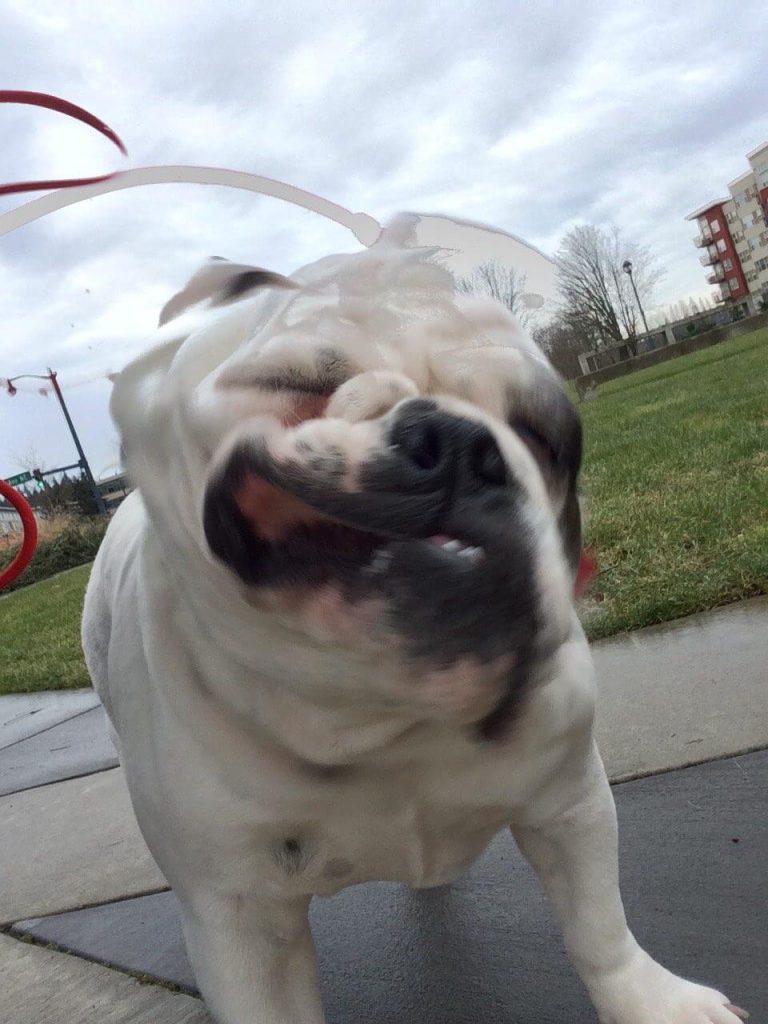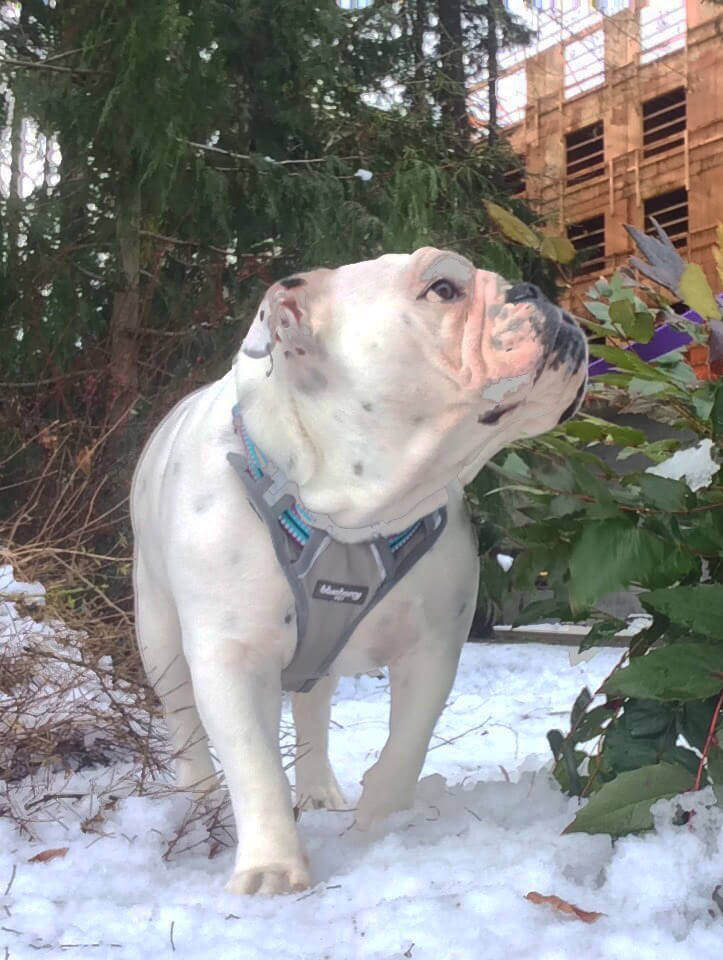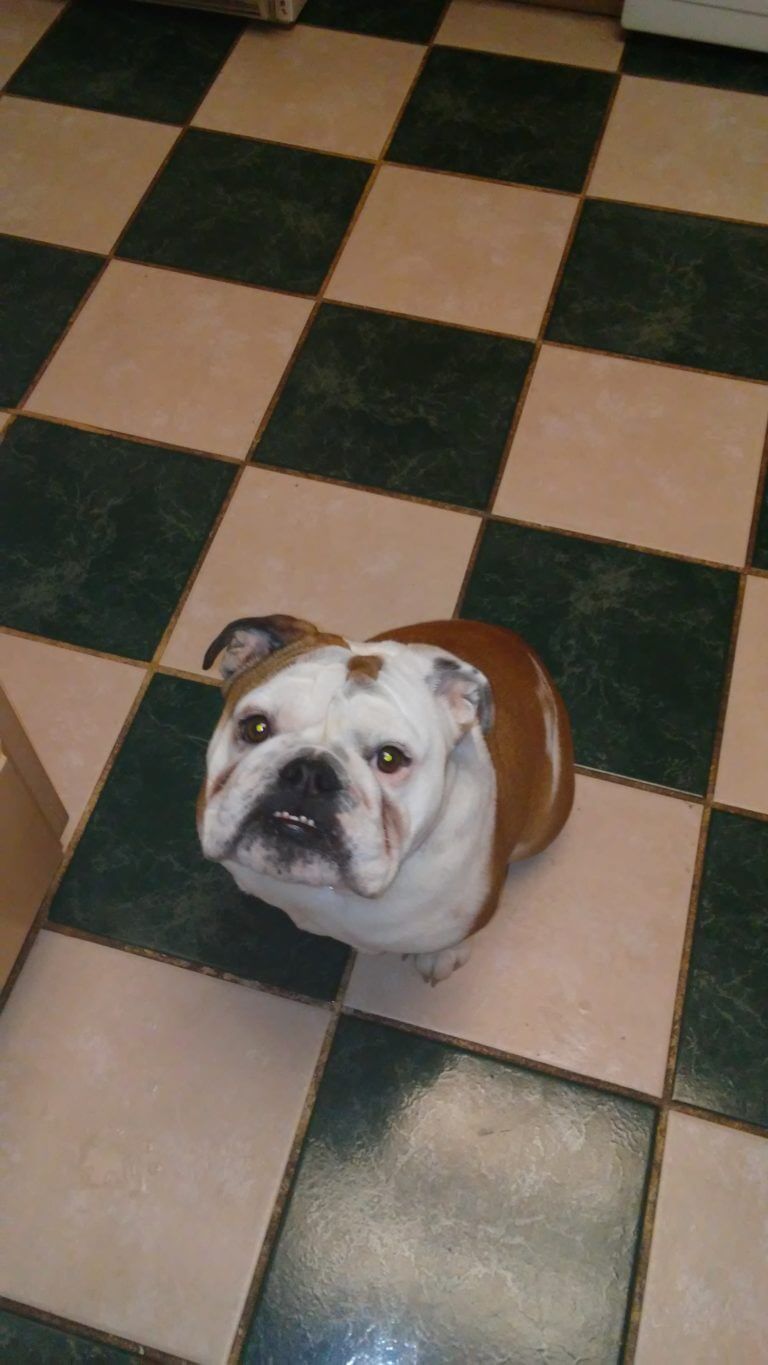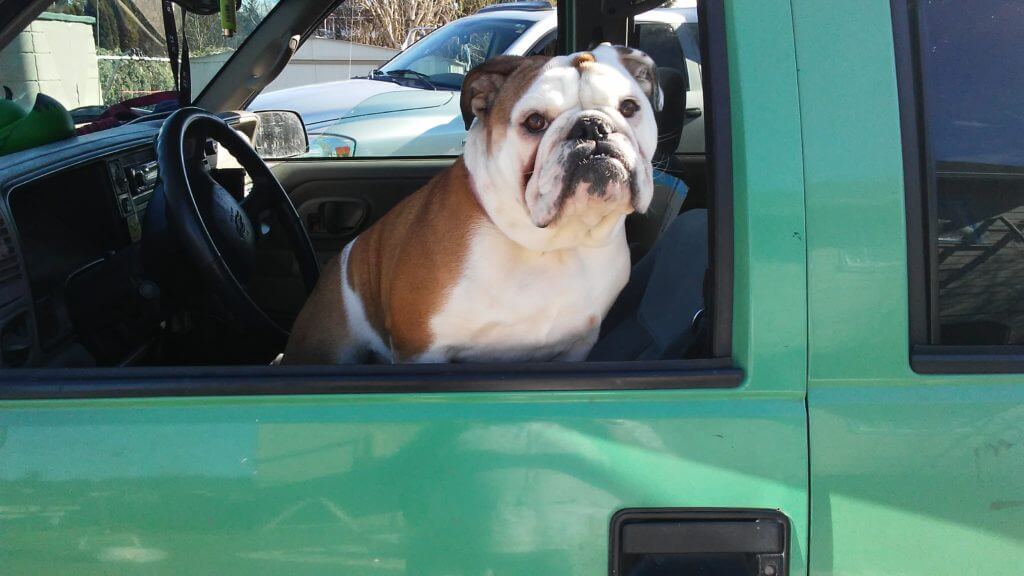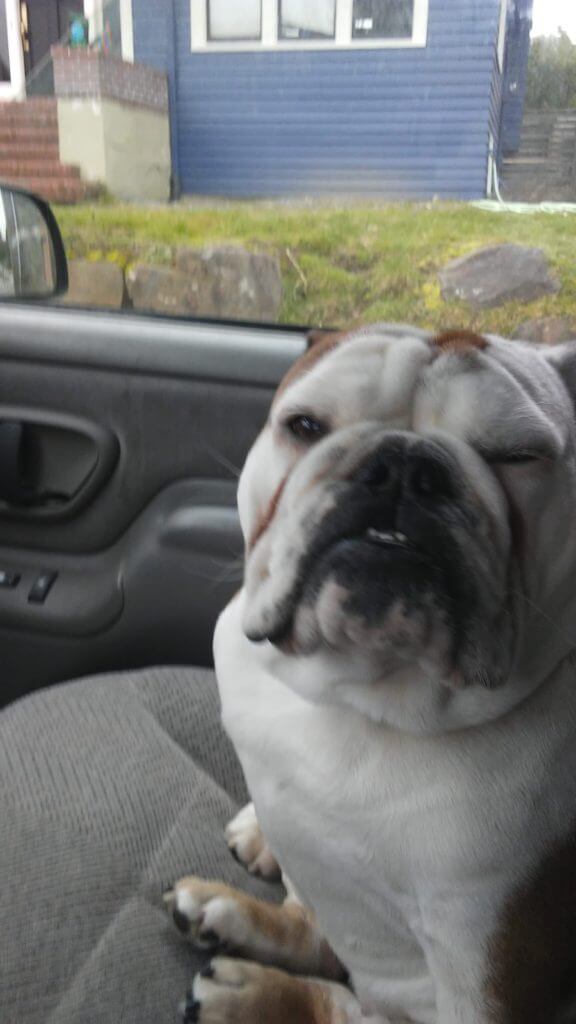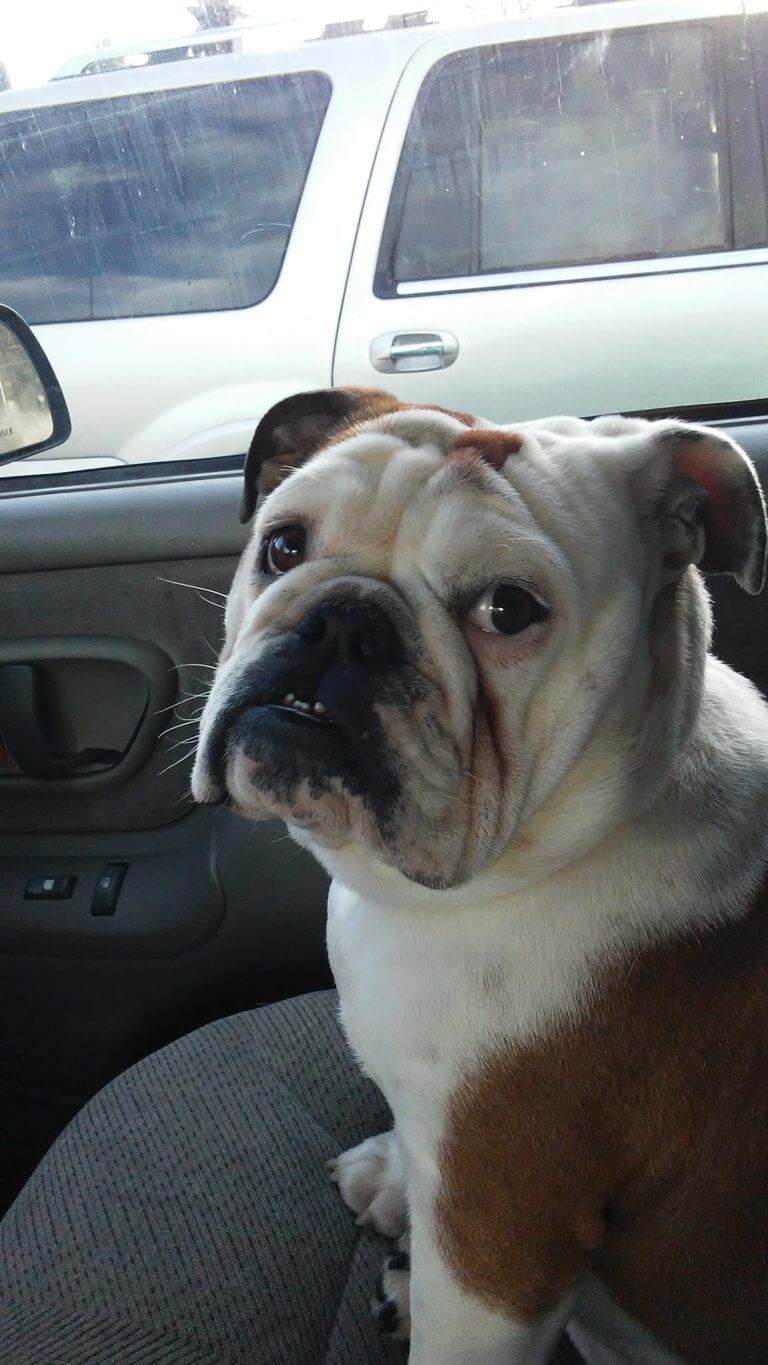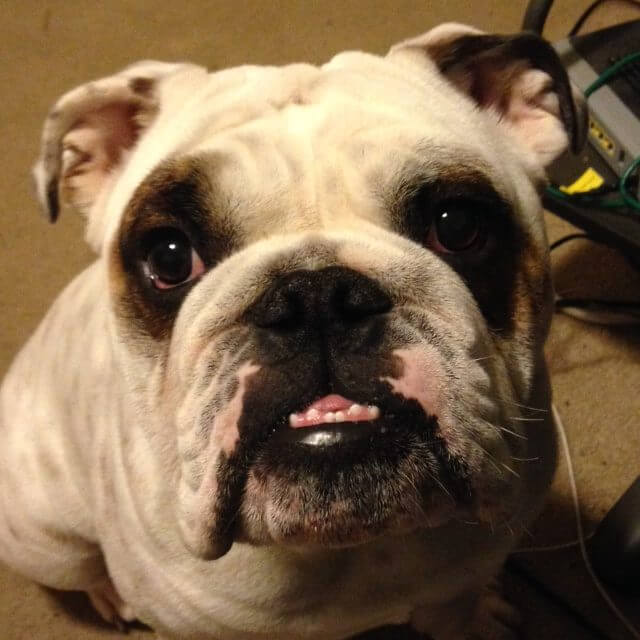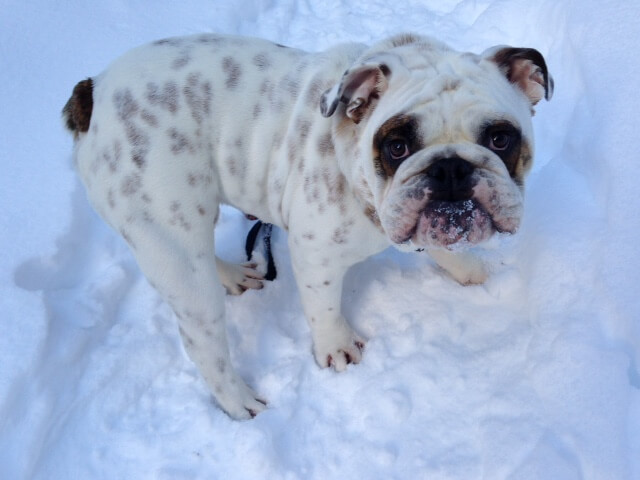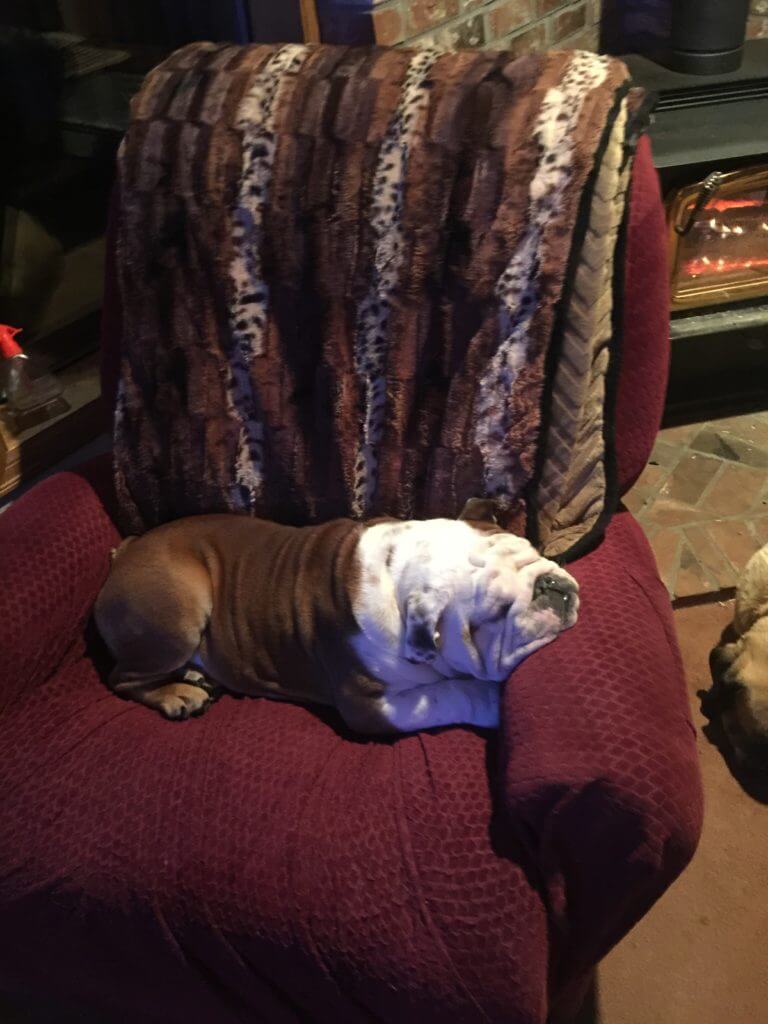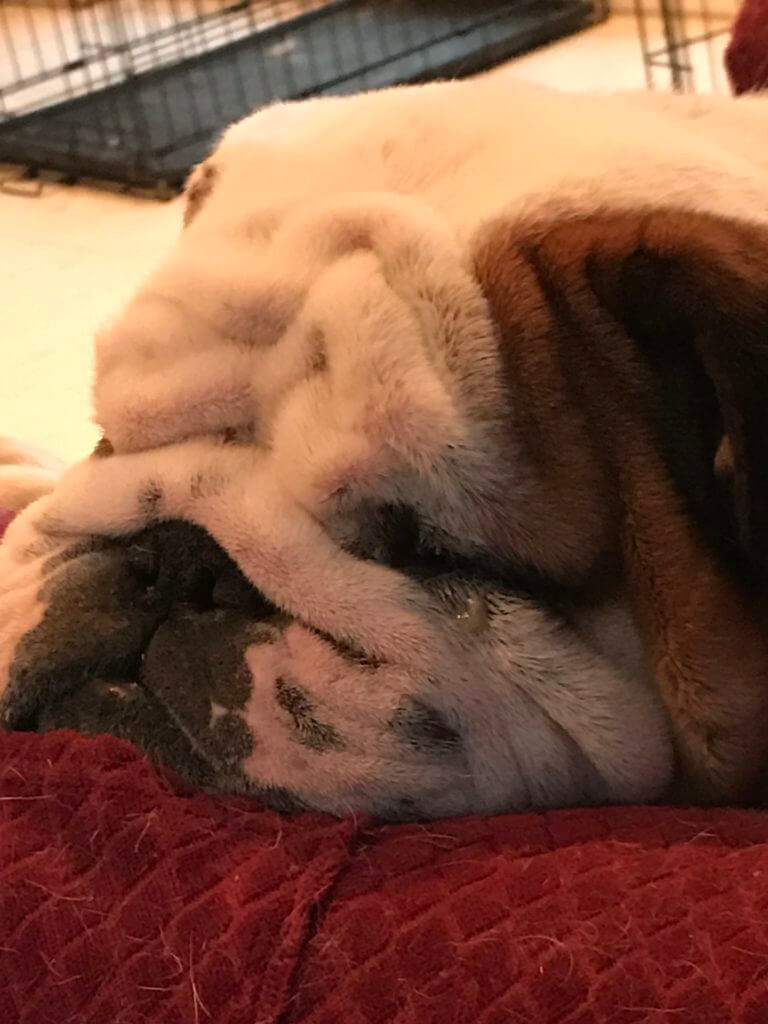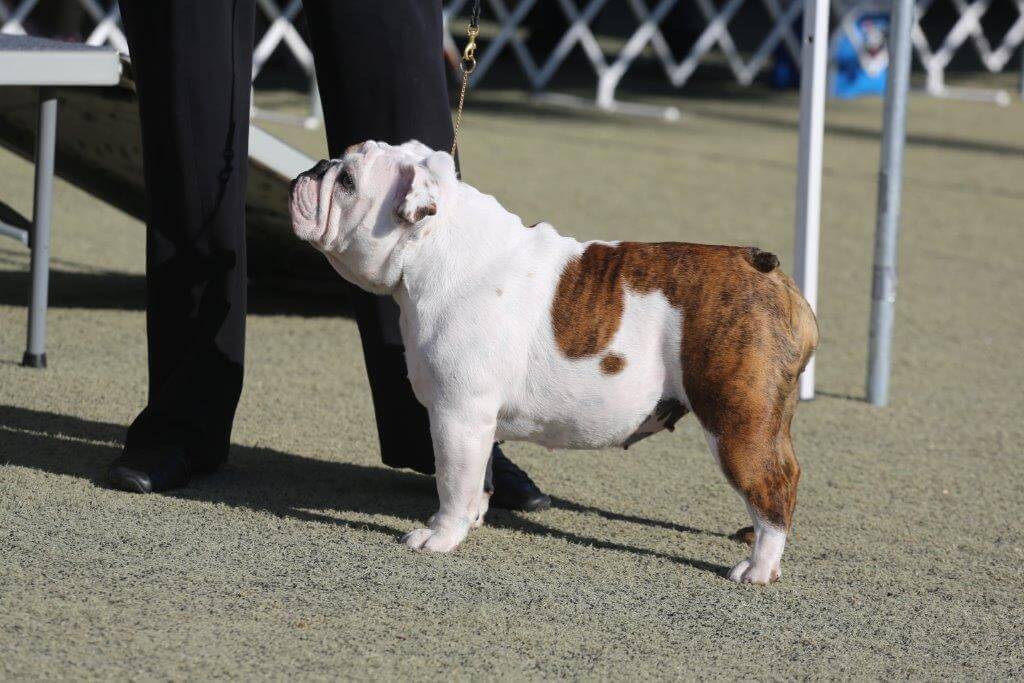Teaching your bulldog how to perform tricks on command is important even if you aren’t planning on entering your bulldog into a dog show. Bulldogs, like any dog breed, need mental stimulation in order remain healthy. Learning a new skill or command exercises your pup’s brain while strengthening the emotional bond between dog and owner at the same time. Your bulldog naturally wants to please you and will feed off your energy. If you’re happy he barked or sat on command, he will be, too. Training can also boost fitness, agility and confidence levels.
Whether you’re planning on having your bulldog compete in a dog show or you’re simply wishing to teach your dog a few new tricks, the dog show tricks listed below provide a solid foundation of tricks for beginner, intermediate or advanced skill levels.
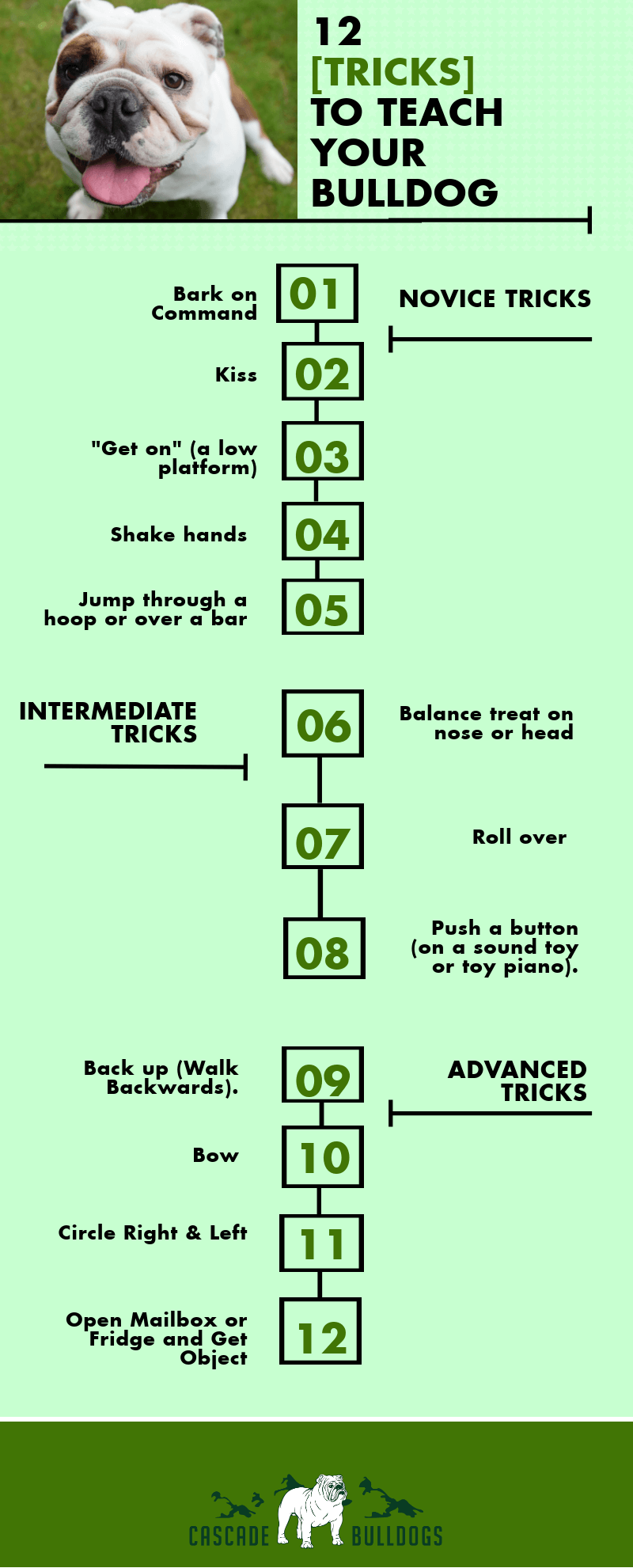
How Dog Show Tricks are Categorized:
First, some details on how the American Kennel Club (AKC) evaluates trick dog titles and their corresponding tricks.
Dog show tricks are categorized by levels set forth by the AKC. Those wishing to earn official dog show titles must compete in the AKC titling event known as “Trick Dog.” There are currently five titles offered—Novice Trick Dog, Intermediate Trick Dog, Advanced Trick Dog, Trick Dog Performer and Trick Dog Elite Performer. In order for your bulldog to earn an AKC trick dog title, he or she must demonstrate mastery of a total of 10 tricks. The tricks must be performed in front of an AKC CGC Evaluator, with the exception of dogs competing for the Elite Performer title. Those entries are filmed and then evaluated via video submission.
You can learn more on the AKC Trick Dog FAQ page.
Below are further details on the titles and their required tricks.
AKC “Trick Dog” Titles:
1. Novice Trick Dog
To earn a Novice Trick Dog title, your bulldog must perform 10 skills from AKC’s Novice List. You must choose ten skills from the following list of 21 tricks:
- High five
- Bark on command
- Walk on a beam (board is a few inches off the floor)
- Crawl (must crawl on belly for five feet or more)
- Fetch it (ball or similar item must be at least 10 feet away. Bulldog must bring it within two feet of the handler)
- Hold (for at least three seconds)
- Jump through a hoop or over a bar
- Kennel up (go into crave)
- Kiss
- Paws up (place two front paws on a low stool or step)
- Push-ups (sit, down, sit, down, sit, down)
- Shake hands
- Spin in circle
- Touch it (hand or target stick)
- Tunnel (must go through agility tunnel or child’s tunnel)
- Find it (find item hidden under a cup)
- Get your—(toy, leash, brush)
- Get in (gets in box)
- Sit in box on command
- Get on low platform or step (all four paws must be on the platform or step)
- Hand signals “Sit,” “Stay” or “Come” (Choose one hand signal)
2. Intermediate Trick Dog
In order to be eligible for the Intermediate Trick Dog title, your bulldog must already possess the Novice title. Additionally, your bulldog must also perform 10 intermediate tricks, which include the following:
- Balance treat on nose or head
- Carry a basket (or other object)
- Catch (toy, ball, treat, etc)
- Crawl (must crawl on belly for at least five feet. You may use food or a toy to lure dog)
- Jump through handler’s circled arms or over handler’s leg
- Weave around handler’s legs
- Paws up (on handler’s arm)
- Pull a toy on a string or rope
- Push button/key to make a sound on a toy piano or other sound toy
- Roll over
- Find it game (must find treat or scented item under one of three cups)
- Sit pretty (sit up or sit with head tilted)
- Wave goodbye/hello
- Weave through six poles (may use food or toy to lure)
- Fetch it (20 feet away and your bulldog must deliver the item to the handler’s hand)
- Game (Your bulldog successfully uses treat dispensing item—puzzle, Kong, etc.)
- Go find (Your bulldog must find an item that handler has hidden)
- Go to your place (bed, mat or crate must be 10 feet away or further)
- Hand signals for sit, down, come, stand (Bulldog must be able to recognize three of the four hand signals).
- Wobble board
3. Advanced Trick Dog
For the title of Advanced Trick Dog, your wrinkle-faced pooch must have the Intermediate title, plus demonstrate mastery of 10 of the following tricks:
- Back up (walk backwards)
- Balance treat on nose, flip to eat when handler says “OK”
- Barrel (Bulldog rolls a barrel with two paws or stands on the barrel with all four paws).
- “Take a bow” (or curtsey)
- Circle right, circle left
- Cover eyes (Bulldog covers eyes with paws)
- Cover-up with a blanket
- Go hide (under a table, for example)
- Head down
- Hide your head (under a blanket or pillow)
- Jump into handler’s arms
- Jump over handler’s back
- Turn on light (use a pressure sensitive battery operated light)
- Open the door of a toy mailbox or refrigerator and get an object
- Play dead
- Follow commands of “sit” or “down” from a distance of 15 feet
- Find scented objects underneath cups (choose from five)
- Take a tissue out of a box and bring it to the handler
- Take a toy to a box and drop it inside
- Weave through poles without a food or toy lure
4. Trick Dog Performer
To earn this title, your bulldog must perform a routine that includes 10 tricks. At least three of the tricks must include props. The choice of which tricks to use is left up to the owner/handler, but they must be intermediate, advanced or performer-level tricks. The goal is to use the tricks to tell a “story.”
Here are several examples:
- Pretend to dig
- Lift leg and pretend to urinate on a fire hydrant
- Limp
- Nod or shake head yes or no
- Push a baby stroller
- Paint
- Pretend to dial phone
- Walk with stuffed animal on back
- Climb into suitcase and close the lid
You can find more examples and further details on the AKC Trick Dog Performer PDF.
5. Trick Dog Elite Performer
This is the highest level of the Trick Dog event. Your bulldog must perform a scripted routine that includes a “story,” 10 tricks, and at least five props. Evaluations are done via video submission.
You can find further details on the AKC Trick Dog Elite Performer PDF.
How to Teach Your Bulldog Show Tricks:
Bulldogs can be stubborn at times, so they may need extra encouragement and praise to perform tricks on command. Luckily, bulldogs amicable nature and quick wit make them good sports and fast learners.
If you’re new to dog training or a first-time bulldog parent, here are a few helpful tips to get you started.
-
Train with a clicker
Train your bulldog dog to associate the sound of a clicker with a treat. Clickers work better as a reward system than treats alone because your pup will know immediately if he’s done a good job, even if it takes a moment for you to get him a treat.
Keep in mind that it may take up to a week for your dog to start associating the sound of the clicker with the treat, so it’s recommended that you practice two to three times per day.
-
Be diligent about using commands
One way get your bulldog to start associating a command with a specific action is to say the command after your dog spontaneously does the action. For example, if your bulldog dog sits, say “sit” immediately after he does it.
Be patient and remain diligent. Your bulldog may need to hear a word anywhere between 10 to 100 times before he begins to understand it.
-
Arrange a practice schedule
It’s important to start off slow, especially if your end goal is to have your bulldog compete in a dog show. Have your dog practice her tricks in a low-stress environment free of distractions. Say a command and wait for her to do it. When she does, click the clicker and give her a treat.
After your bulldog has mastered performing the trick in a calm and familiar environment, start practicing in higher stress environments, like parks or in the presence of strangers. Show rings can be loud, crowded and overstimulating, so it’s important that your bulldog learn to obey your commands in a wide variety of settings.
Add more distractions every week until your dog is able to focus even in the most noisy or chaotic environments. Reward your bulldog with praise and treats each time she is successful.
-
Slowly wean your dog off treats
Start periodically eliciting a command without a treat. It’s vital that dogs do not get too accustomed to being treated because then they’ll only obey commands when a treat is involved.
About Cascade Bulldogs:
Cascade Bulldogs is a bulldog blog managed by Gail and Eddie Harris, a couple who breeds and raises bulldog puppies in Seattle, Washington. They are the proud parents of several celebrity bulldog show dogs, including Wildflower, Snow White and Declan.
Related Posts:

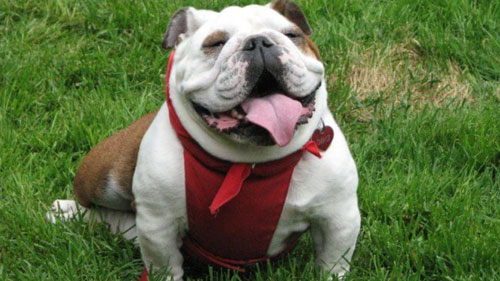
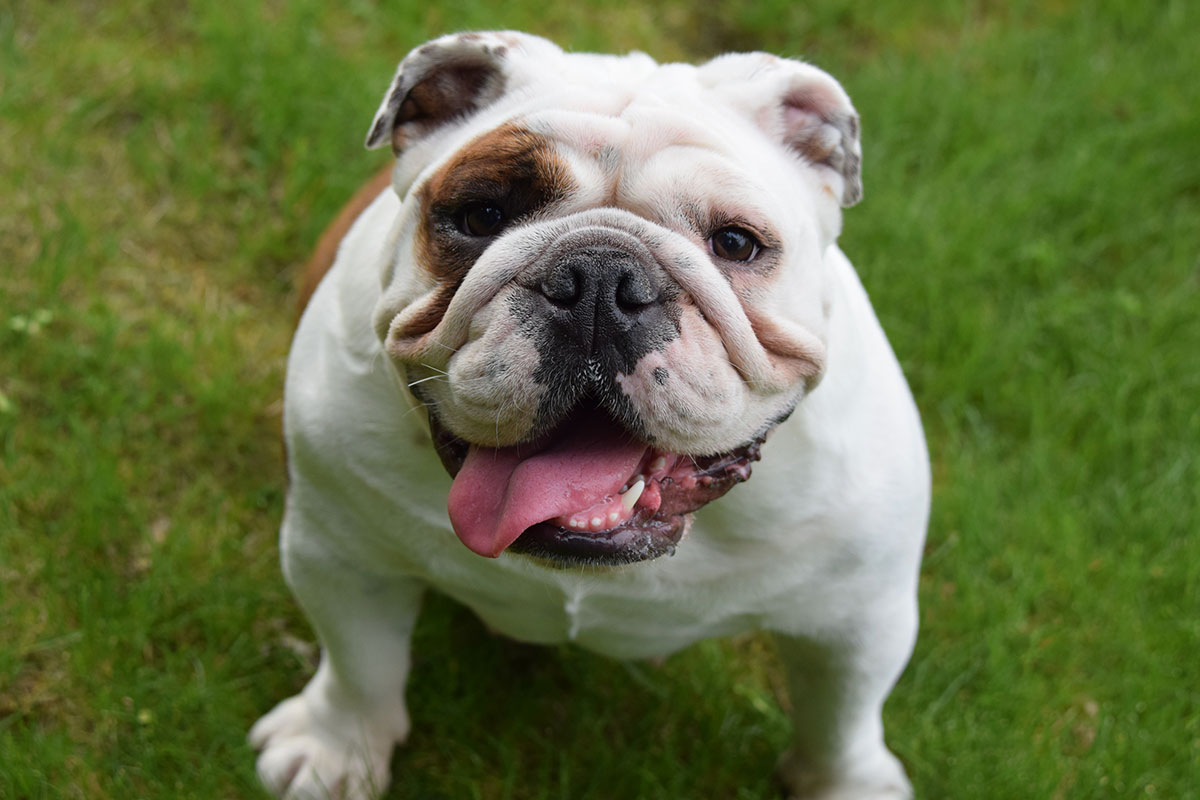
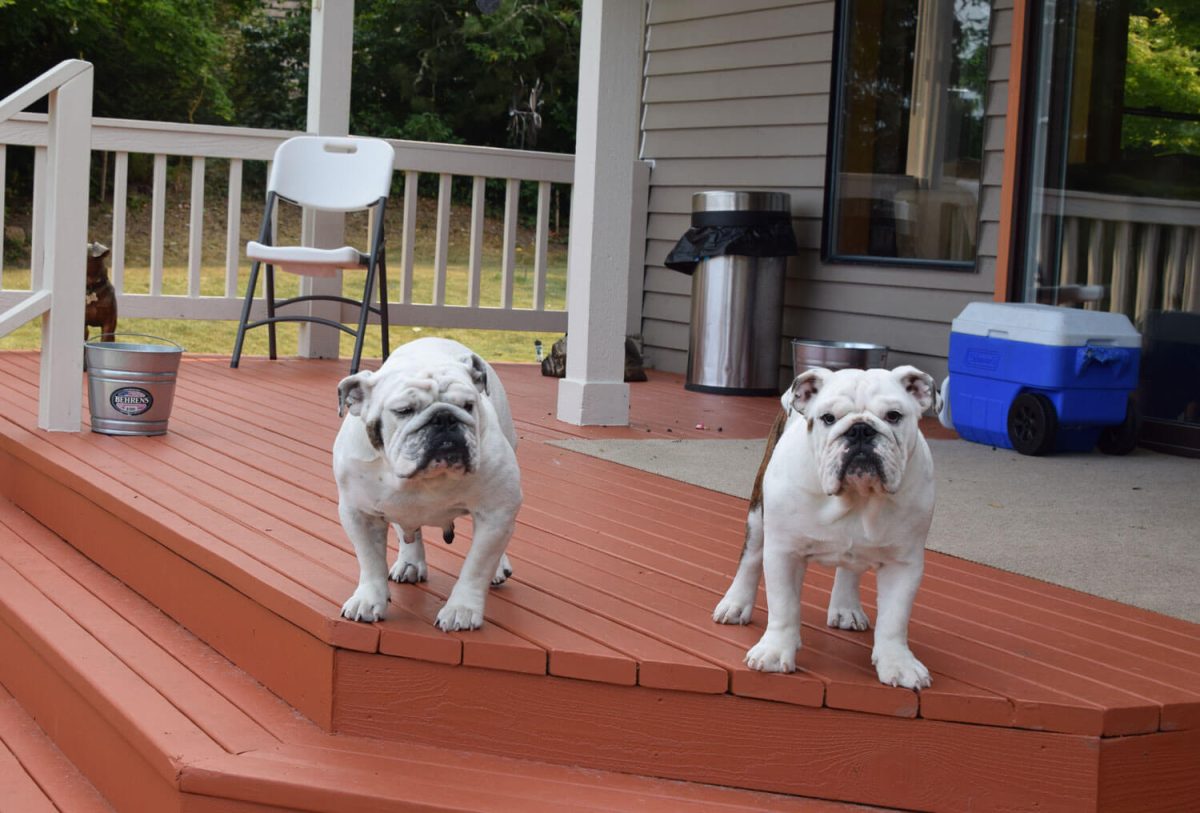

 Lounging in the pool.
Lounging in the pool. Yes? May we help you?
Yes? May we help you?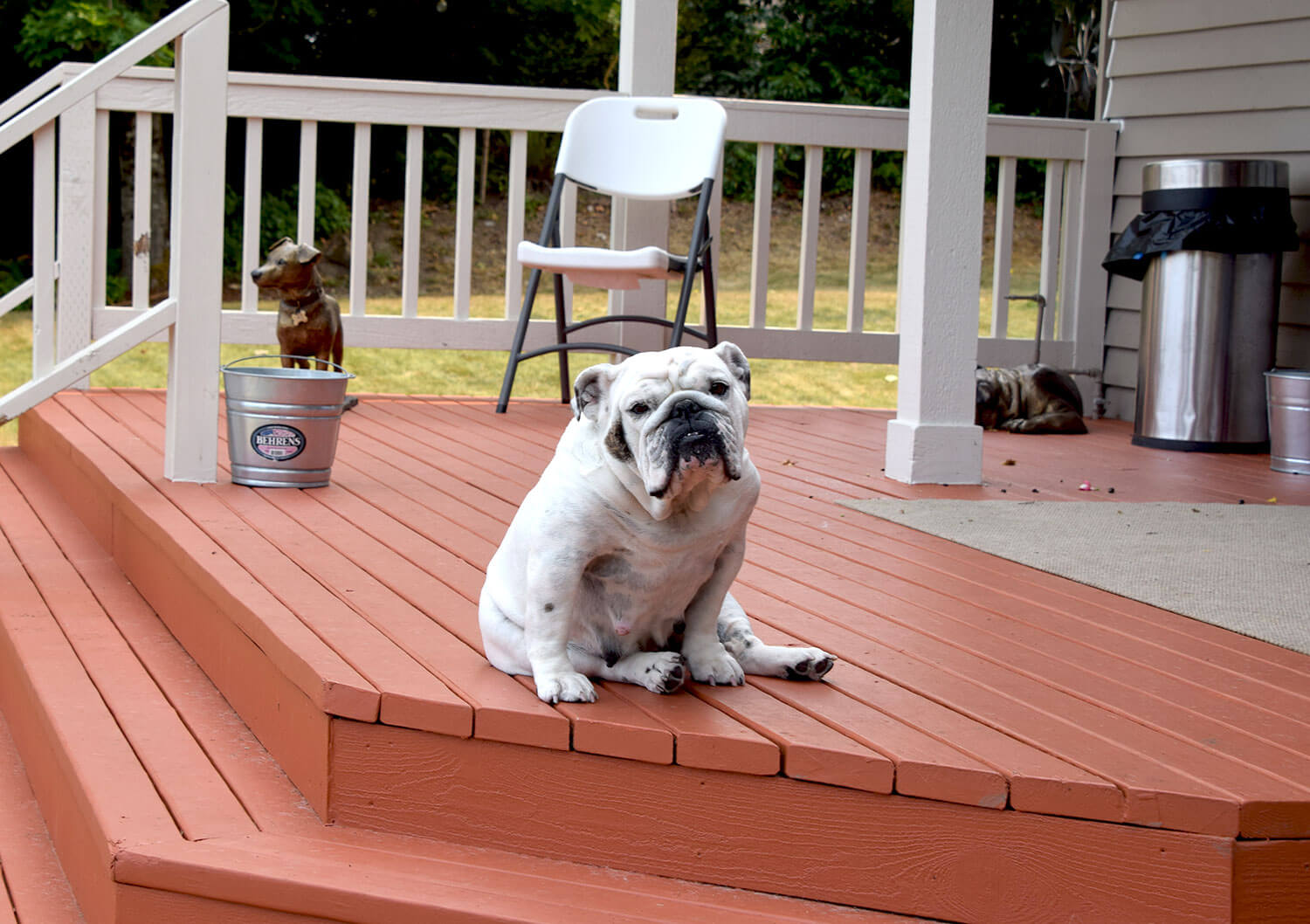 Just taking a break.
Just taking a break.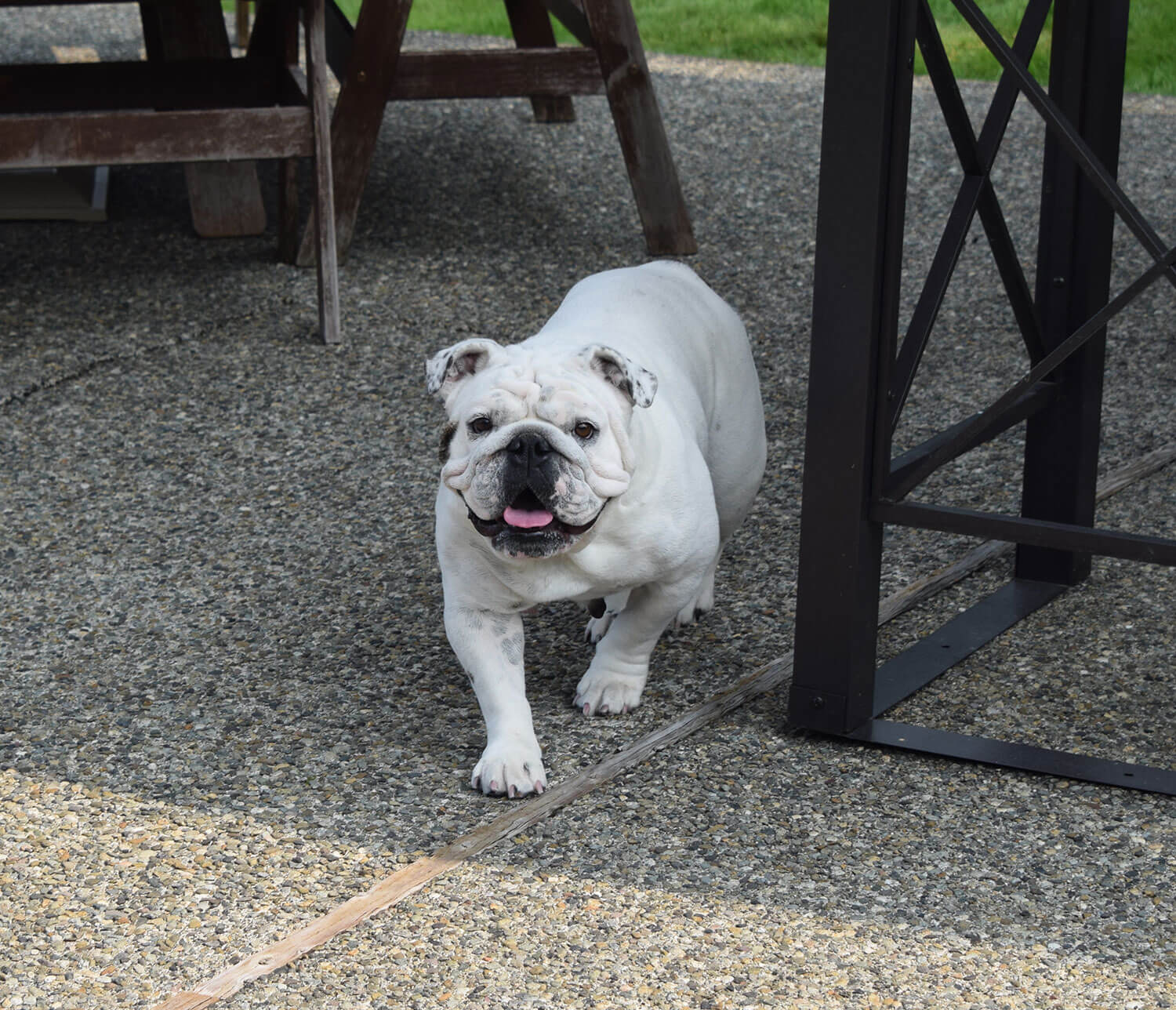 What a happy pup!
What a happy pup!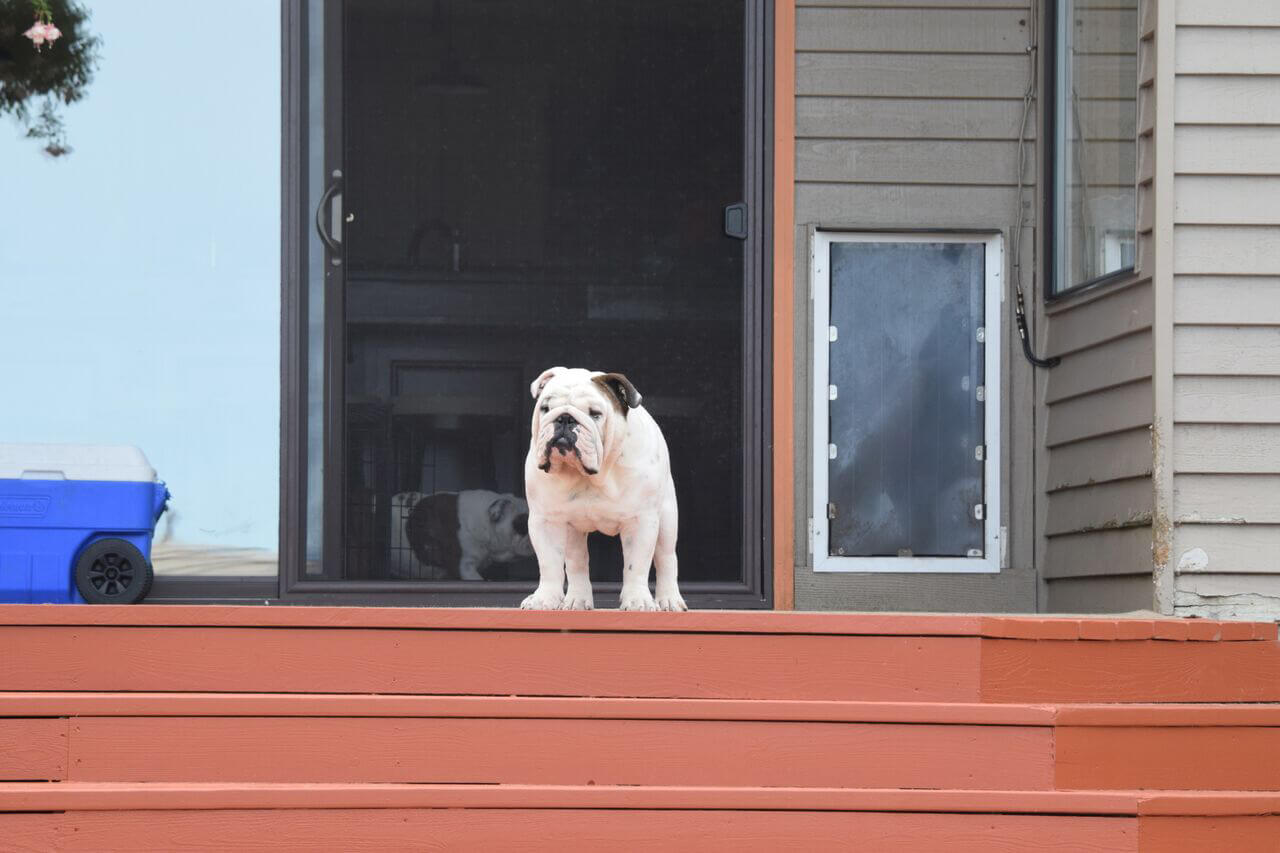 Hey guys! Wait for me! I want to play, too.
Hey guys! Wait for me! I want to play, too.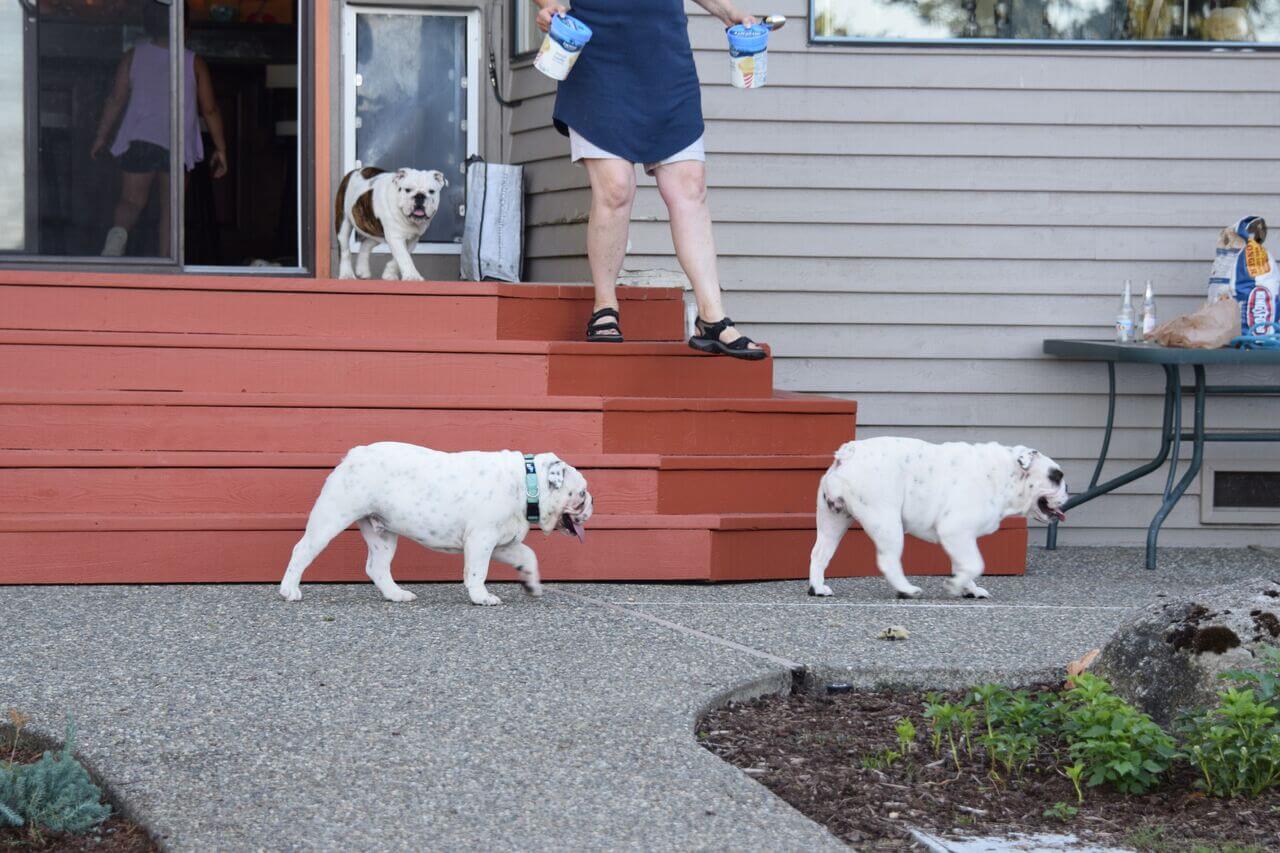 We’re following the leader.
We’re following the leader.
